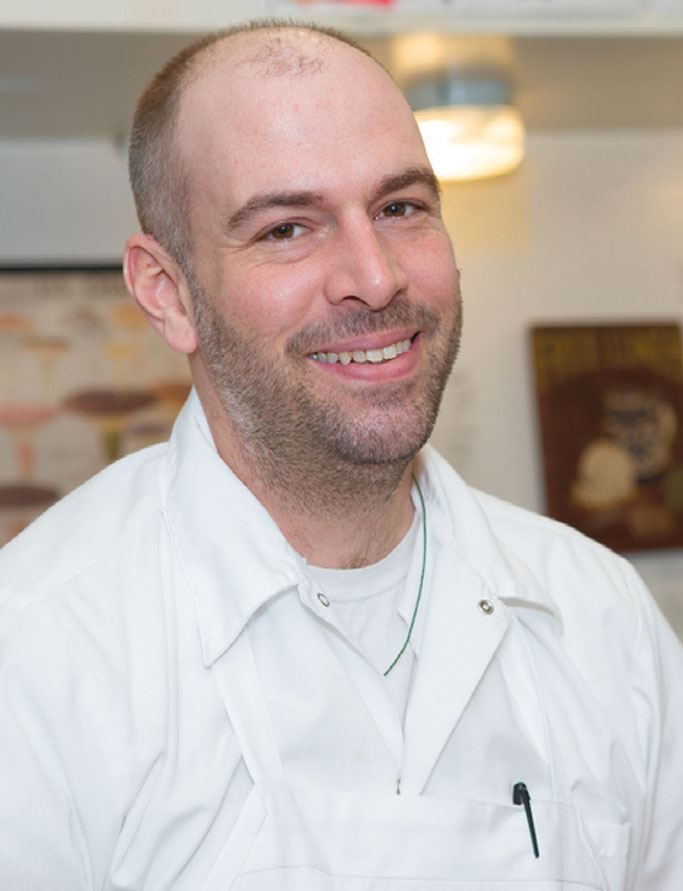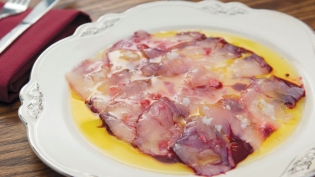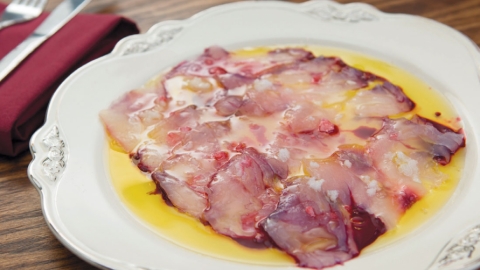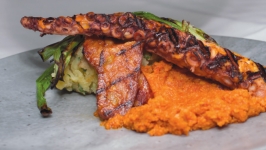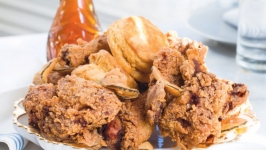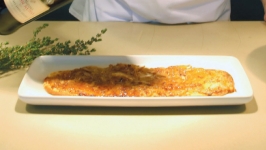American Red Snapper Crudo
CHEF: PHIL MANGANARO
RESTAURANT: PARK PLACE CAFE & RESTAURANT
LOCATION: MERCHANTVILLE
Manganaro features three or four crudos on his menu each weekend. He notes that as long as one starts with top quality, superfresh fish, crudo presents endless opportunities for creativity.
Crudo is the Italian way of celebrating the pristine flavor and silky texture of raw fish. For Phil Manganaro, chef/owner of Park Place Café & Restaurant in Merchantville, crudo is also a vehicle for expressing his love of nature and fascination with the wild tastes of New Jersey’s woodlands and shore.
Simple and spare, crudo relies heavily on the quality of each ingredient. And the olive oil, salt and acid must be used in just the right quantity to complement, but not overpower, the star ingredient—perfectly fresh, sushi-grade fish.
As the foundation for this crudo recipe, Manganaro chose American Red Snapper, a firm, mild, white fish, which he slices thin on a 45-degree angle. The slices are laid out on small serving plates and sprinkled with sea salt, which, at Park Place, is made in house.
Manganaro’s interest in making sea salt began a few years ago while he engaged in a favored pastime. “I really love surfing,” Manganaro says. “When you wipe out or go underwater, the water runs down your face. I licked my lips once and it was a flavor of salt that I hadn’t tasted. So, that gave me the idea to make my own salt.”
He begins by collecting two 40-gallon containers of ocean water, which he filters, boils until most of the water has cooked off and then dries in a low oven. Eighty gallons of water yields a little under one pound of salt, so he must repeat the salt-making process many times throughout the year.
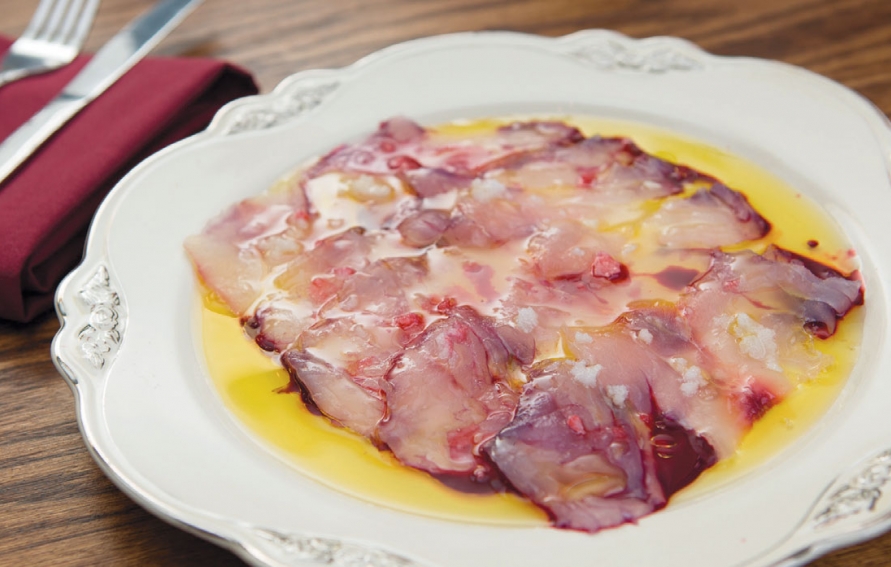
“I found that the flavor actually varies from time to time. I’ve made it on one day and gone back the next month when there has been seaweed in the water and the salt has a completely different finish,” Manganaro says. “You could actually taste the seaweed after you finish chewing the piece of fish and swallowing.” He typically keeps four or five different house-made salts on hand and chooses which one to use depending on the fish he is preparing.
His house-made sea salt is also added to Park Place Magic Oil, which is drizzled over the salted fish. Although it is common to use plain olive oil on crudo, Manganaro encourages cooks to add a personal touch to their crudo—and cooking—by seasoning their olive oil. “I was trained that you season everything. I always found it strange that you would put an unseasoned object on a seasoned thing,” he says. “But, more important, anybody can buy a really high end bottle of olive oil to finish something with. For me, I want to continue to make strides to make things myself.”
His Magic Oil is infused with wild juniper berries that Manganaro forages in the forests of southern New Jersey. The juniper berries, he says, add a whole other layer of flavor to the oil and crudo. So, too, do seasonal wild-crafted herbs, such as spruce tips and mugwort—an invasive plant with a flavor he describes as a cross between oregano and fennel.
The crudo is finished with a touch of huckleberry juice and served with toasted bread on the side to soak up any oil and juices that remain on the plate.
Manganaro features three or four crudos on his menu each weekend. He notes that as long as one starts with top quality, super-fresh fish, crudo presents endless opportunities for creativity. “The base is fresh fish, good olive oil and salt,” Manganaro says. “The fun with crudo is that you can use that base and do anything with it.” Some of his many versions of crudo include Russian caviar and truffles with Magic Oil and his salt, and tuna belly with Serrano chilies, Magic Oil, salt and honeycomb. The key, he says, is to balance sweet, salt, texture and fat in the right proportion so that all of the ingredients go well together.
By foraging the ingredients, Manganaro is reconnecting with the natural world that was an integral part of his childhood in Marlton, where many of the woodlands of his youth have given way to development. It also challenges him as a chef and allows him to showcase his Garden State pride.
“I love New Jersey. I think it is a beautiful and great place,” says Manganaro, who also makes his own maple syrup and root beer from foraged ingredients. “There is a certain stereotype that some people give the chefs in New Jersey. I’m just trying to break the trend there and use New Jersey as my terroir. I like using New Jersey as much as I can.”
PARK PLACE CAFÉ & RESTAURANT
7 E. Park Avenue, Merchantville
856.662.2200
parkplacecafeandrestaurant.com


